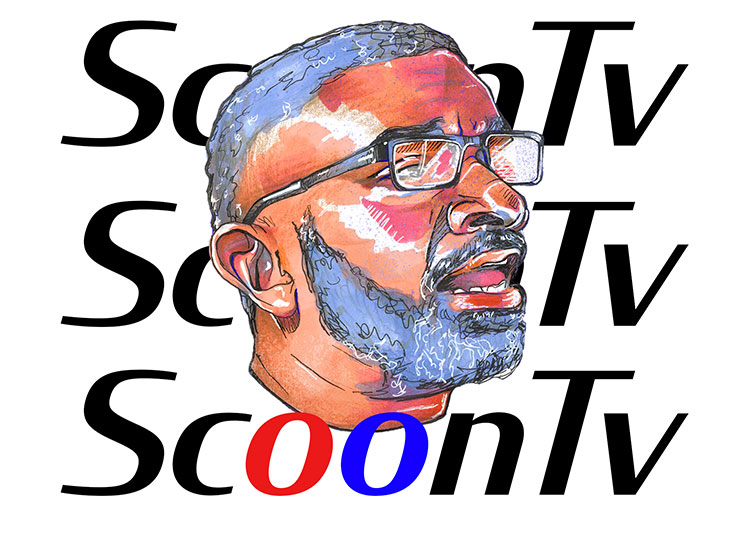By John Baldwin
Before diving into this week’s article, allow me a moment to be honest about this article.
Admittedly, it was written with a bit of hesitation. After completing the article, I sent it over to people whose opinion I respect. Some thought I should wait, others thought it’s great to “build in public.”
The idea of building in public is a double-edged sword. Granted, it allows the public to see what you are working on and follow in the journey. However, it also creates the possibility to have your idea stolen. It happens a lot more than Silicon Valley likes to admit.
Ultimately, I opt to not let fear prevent me from sharing our goal of FENDR. While a well-connected person can steal this idea and be up and running by next week, there are certain things that cannot be replicated.
So, if someone steals the idea, then may the best founder win because we will fight to get this business to market.
Anyways, Derek, who is in my cohort, recently offered me sound advice: work with people who will ask you difficult questions. In that field, my CTO, Keith, never disappoints. Throughout this journey we knew the goal of FENDR – to automate the transactional flow of the car crash industry. In our weekly check-ins, however, Keith posed the question – “But why would they download the app?”
It’s a great question and one that every founder must address– to themselves, to VCs, and more importantly to their customers. Founders must truly understand their customer. Customer interviews are time consuming but insightful. It validates your business and proves what is needed in the ecosystem.
I approached the interview with open ended questions because I wanted the crash victims to tell me about their experiences. The first few interviews went okay. Hearing about their experiences after the accident verified that people didn’t know exactly what to say or do after an accident. Our AI technology will help with that.
While that was one segment of our business, it was not the component that would bring consumers to our website wanting our guidance, expertise, or services. For the moment, I was able to give Keith a decent response, but he was adamant that it must hold true, or investors would see through it. He was correct.
My first client, “Emory”, was involved in two auto accidents two weeks apart. I assisted him with finding legal services and medical assistance. The impact of both accidents has taken a toll on him, both, physically and financially.
Neither accident was his fault, but the accident left him without a car and trying to solve matters that cannot wait for a settlement. One night, Emory and I were talking, and he said something that made the hairs on the back of my head raise.
He said, “If only there was a way to get money now.” I responded, “I know what you mean.” That statement stuck with me, consumed me almost. When we finished chatting, I wrote down a few questions. It was 8 p.m. in California and most of my interviewees were on the east coast.
I grabbed my notepad and wrote three questions:
- Would you describe the financial toll the accident had on you?
- How did you overcome these financial obstacles?
- Are you still reeling from the effects the financial toll took on your life?
The next morning, I got up at 4:37 a.m. I remember the time because I usually need an alarm clock to wake me up.
I waited until 5 a.m. to text my interviewees – “Hey. I know it’s early but forgot to ask you two or three more questions. Call me when you’re free.” They each returned my call and hearing their responses left me disappointed, not in them, but the systems in place for working class people.
One crash victim borrowed money from her 401K, which has a 10% penalty on the amount you withdraw. Some borrowed money from family members. Others used payday loans whose effective rates are sometimes up to 600% depending on the state.
I then reached out to a personal injury attorney who I knew in graduate school at Syracuse and asked him his experiences with clients needing a loan after an accident. He told me about two personal injury attorneys in the central NY area that committed “professional misconduct.” Their crime? Giving an advance to their clients to help with their needs after an accident.
The idea shifted. FENDR was solving the need of accident victims receiving an advance on their settlement. This was a problem. I called Keith and pitched the idea to him. People will use our services because they want an advance on their settlement. We will provide them a low-interest loan and connect them with partners on our site. Keith is an engineer. A man of few words at times. He replied, “That’s it! I like it!”
Originally, FENDR was simply a curated marketplace that addressed the needs of the auto accident industry. But what was it truly solving? Sure, it saved people time, but accident victims needed funds that would assist but not exploit their hardship.
Reflecting on the interviews, I now realize what stood in the way of maximizing the interviews: myself. What I wanted was to spoon feed the solution to the customers. I wanted their responses to align with our goals for FENDR. When I stopped telling them their problems, they told me a viable solution to their problem.
That made all the difference.
Subscribe to get early access to podcasts, events, and more!






